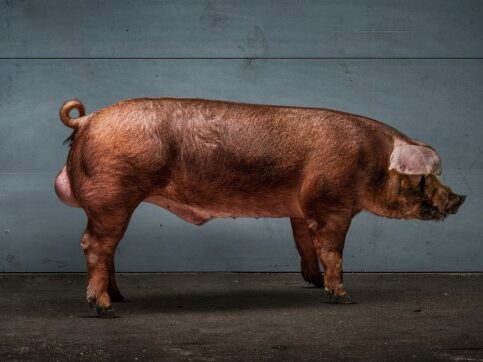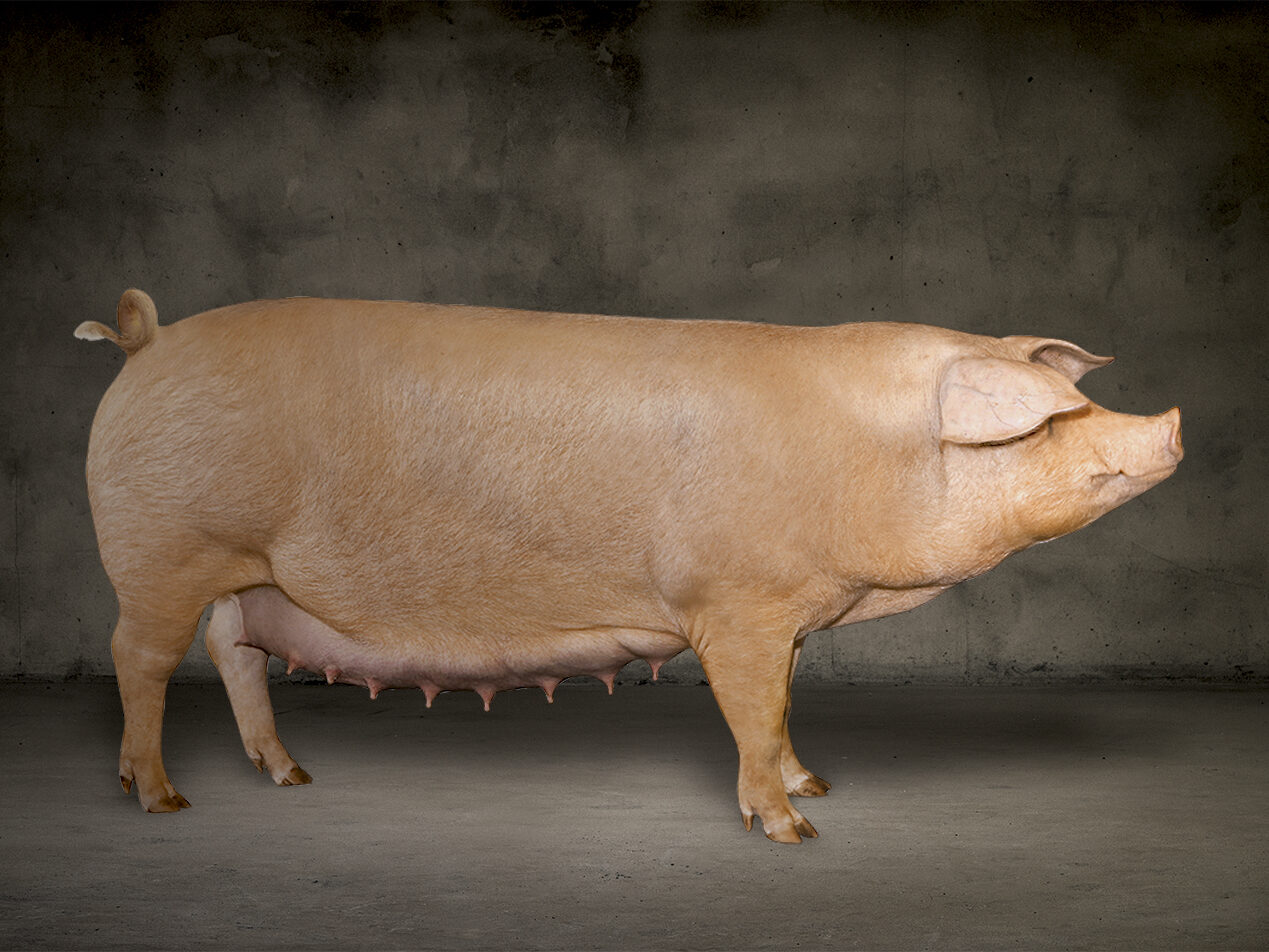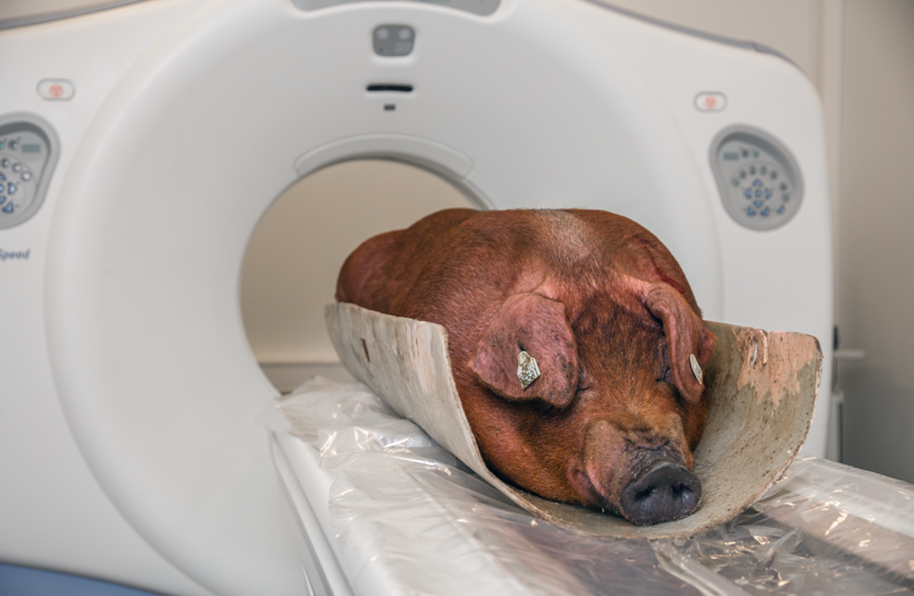Norway is the home country of the maternal line Norsvin Landrace, one of the lines that forms the basis for the TN70 parent sow and the terminal boar line TN Duroc. The new boar testing station Delta Norway plays a key role in the comprehensive breeding structure for the two lines.
By: Tale Marie Karlsson-Drangsholt, Scientist
The genetic nucleus herds form the foundation of the breeding structure. A large purebred nucleus population is crucial for genetic progress. There are 22 Norsvin Landrace herds and eight TN Duroc herds. The owners are all dedicated breeders and contributors to the comprehensive data harvest conducted on these units. Due to regulations, the farm size in Norway is small with a maximum of 105 breeding sows.
Comprehensive data harvest
A large amount of detailed and valuable information about the pigs is registered in the genetic nucleus herds. Data about reproduction, such as gestation period, number of piglets born and weaned, and cases of cross-fostering, are registered by the herd owner through the farm management system. Health information, such as mortality, defects, and diseases, is also registered.




For Norsvin Landrace, body weight of piglets at three weeks and the number of teats are registered, and body condition score and shoulder sores are registered for the sows at weaning. For both breeds, a breeding technician uses ultrasound to measure the back fat and loin depth of the gilts and this person also evaluates the exterior of the gilts. The growth rate is obtained by weighing the gilts at 70 and 150 days of age.
Pig genotype
The genotype of animals is obtained by analyzing a small tissue sample from the ear. The genotype tells how related all the animals are. The genotype combined with the pig’s performance can be used to estimate the breeding value of the pigs. This value tells us how valuable the animal is as a parent for the next generation.
The selection of gilts and sows is done within each herd. The farmers use information about the animal’s breeding value, combined with phenotype and genotype, to decide which animals to select as mothers for the next generation. They are mated across herds to the best boars available using semen from the central AI station Alpha. This ensures that all farms contribute to one genetic pool and one nucleus population.
The selection of boars is done across all genetic nucleus herds, and only the best boars from the best litters get to go on to further testing. The boars are 4-5 weeks old at the time of selection, and a few weeks later, the boars are sent to the central testing station Delta Norway.
The central testing station: Delta Norway
The central testing station, Delta Norway, is crucial for thoroughly testing boars in the same environment. Both Norsvin Landrace and TN Duroc are tested here but grouped in separate pens. From the summer of 2024 onwards, the new Delta Norway will have a capacity of up to 5,000 tested boars per year.
The boars are 25-40 kg (7-9 weeks) when they arrive at Delta Norway. The station has a high health status, just as all the nucleus herds. For biosecurity reasons, the boars are kept in a quarantine unit for three weeks before entering the actual testing facility.
The testing period is from 40 kg to 130 kg. Detailed information about the growth and feeding is registered during this testing period. In all pens, FIRE (Feed Intake Recording Equipment) feeding stations are installed, ensuring that each time a pig eats, its weight and feed consumption are registered. This offers comprehensive insights into feed consumption and weight gain, allowing the animals’ growth rate and feed efficiency to be determined.
Text continues after the photo.


Trained technicians evaluate the exterior of the boars at the end of the test period. All boars are CT scanned at around 130 kg. The scan provides detailed, invaluable information about the carcass on live pigs. This includes information such as primal yield, lean meat percentage, joint health, and other physiological characteristics. Meat quality traits must be measured on actual carcasses and are evaluated on culled boars after post-test selection.
Only the best 5-10 percent of all boars are selected to become AI boars. The selected boars are quarantined for six weeks before entering the central AI station Alpha. High-value boars not selected for AI are available for export.
Collection and distribution of semen: Norsvin Alpha AI-station
Alpha is the central AI station in Norway and serves all Norwegian pig farms, including the genetic nucleus herds. Only the very best boars, “elite sires”, are used for artificial insemination in the genetic nucleus herds. This provides a strong foundation for continuous genetic progress.
Strict quality control of semen takes place prior to distribution, both when boars arrive at Alpha and through the monitoring of every batch of semen collected. The AI station also distributes semen for export, both frozen and fresh.
New test and innovation center Delta Norway
A new high-tech test and innovation center will open this year in Norway. Delta Norway has an annual test capacity of 5,000 young boars from the Norsvin Landrace and TN Duroc lines.
New technical solutions and infrastructure for large-scale data capture will significantly boost our genetic program. Besides individual feed intake registration and performance measurements, the extensive use of sensors, cameras, and artificial intelligence will make it possible to track pigs continuously and register fluctuations in their environment and behavior.
The construction of Delta Norway will be completed in June 2024. The plan is to receive the first animals in July 2024.


